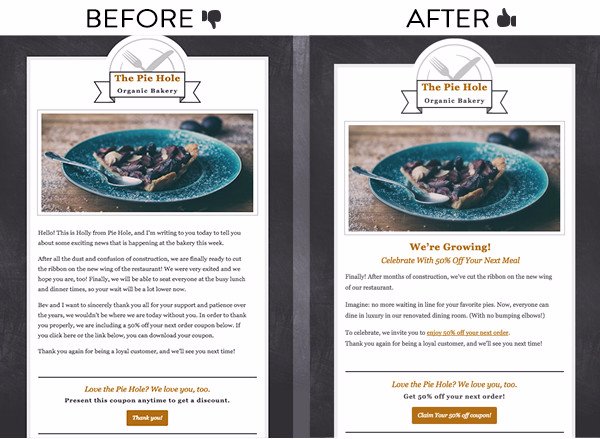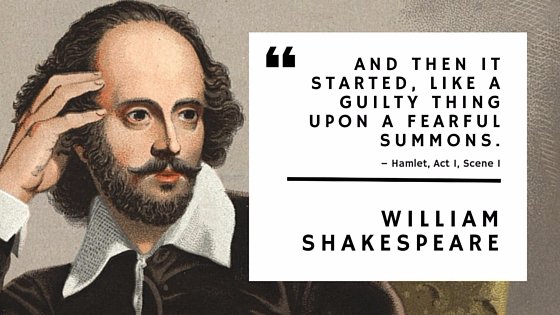Not again.
You’re staring at a blob of words, adding and removing commas, trying to coax your sentences to life. But there they sit. Limp. Lifeless. Convincing no one to click that big green button.
Sound familiar? It happens to the best of us. There is a secret to good writing (and it's not as hard as you think).
Good writing is simple. It’s easy to read. It gets to the point and spells out what to do next.
But what does that mean? Try these 5 tips on your struggling first draft to focus your message and start writing better today.

#1) Put Your Best First
When you have only seconds to hook a reader, every word counts.
If you only do one thing, make sure that a reader who spends 5 seconds on your page can pick up what you’re laying down.
People read in an F-pattern: headline and subhead first, then section headers, bulleted lists, and any images they see down the page. It’s your job to put those hot zones to work.
Pro Tip: Cater to skimmers and you'll retain more readers. If you can tell your whole story in only headlines, subheads, bullet points and images, you’re already winning.
#2) Write with the end in mind
Don't ramble. Before you even start writing, figure out what your #1 goal is. Even if it's just "click the button," once you identify your purpose, you need to stick to it.
I know you have a lot of cool things to say, but trust me. There will be time to write more blogs or emails. Just focus on the first next thing you want your reader to do, then only work to make them do it.
Pro Tip: Make sure that every line moves the reader toward fulfilling your goal. Every headline, subhead, bullet point and Call To Action (CTA) needs to point them to the button and give them a good reason to click it.
#3) Keep it Brief
When you write more, people understand less.
Overstuffed sentences are difficult to think through. They take time to process and cause the reader to pause (and possibly bail on your page).
The solution is to bust up long paragraphs into easily digestible chunks. Chop complex sentences into single thoughts. Be brief, and readers will keep reading.
Pro Tip: Aim for an average of 5 characters per word, 10-20 words per sentence, and 2-4 sentences per paragraph.
#4) When you’re done, stop talking.
You have one job: tell your reader what they need to know – then stop.
It’s hard to do. But if you write with the end in mind, you can set up a narrative, walk your reader through your points, and then arrive at the logical end in a hurry. And when you’re done, you’re done.
Pro Tip: Finish with a strong CTA that describes not only what you want the person to do, but what they'll get out of it. "Snag a 50% off coupon." "Look like a rockstar." "Crush your next interview."
#5) Slash & Burn
Once you blast out a first draft, sleep on it – then get out the red pen. Remember: no matter how much you love a clever phrase... if it’s not helping you, it’s hurting.
Be ruthless. Slaughter any word or sentence that doesn’t pull its weight. Mow down cliches, “biz buzz” and jargon like grass. Condense your writing to its essence and you’ll end up with a stronger piece that gets to the point and stays there.
Pro Tip: Try striking out your first few sentences entirely and see if it doesn’t tighten up your writing. I do this when I’m stuck, and about 75% of the time it makes my writing instantly better.
Kill On Sight:
- Adverbs – (Yes, really.) There are exceptions, but a stronger verb or noun is almost always better.
- Vague Words – Someone, stuff, things… Give facts instead. Readers appreciate details.
- Jargon & “Biz Buzz” – It doesn’t sound cool or smart, it actually makes readers distrust you.
- Superlatives – Your business is awesome. But unless another customer says it, readers probably won’t believe it.
- “I believe, I think, in my opinion...” – Be strong. Use strong words. Believe in yourself and your readers will, too.
Still Need Some Help?
Try checking out our walkthrough on how to write stellar email copy. It includes 3 email templates that you can use for your own business.
We also have a handy how-to for writing About pages.
Cheers, and happy writing!





Leave a comment
0 Comments